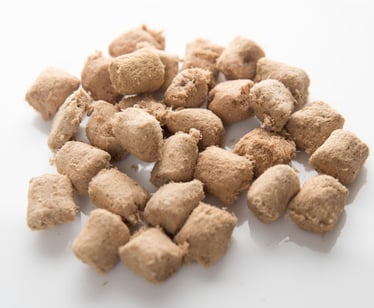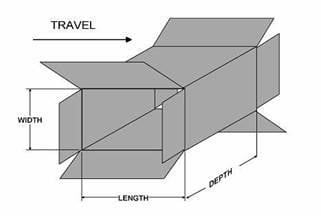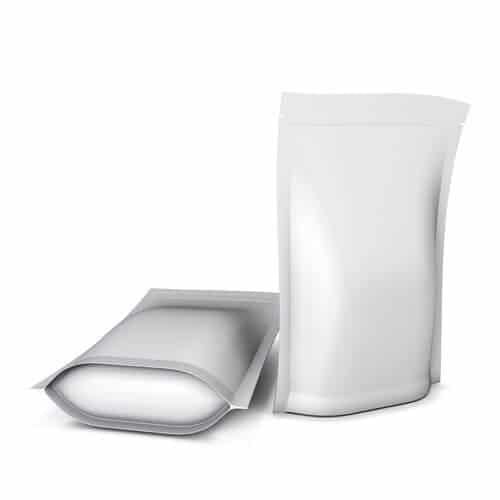1 min read
What is Bag in Box Packaging and Why is it Becoming Less Popular?
Bag in box packaging is a type of packaging method that uses a flexible package inside a paperboard carton. A bag in box package is created by...
4 min read
 Emily Brogan
:
Mon, Oct 13, 2025
Emily Brogan
:
Mon, Oct 13, 2025

According to the Washington Post, more than 23 million American households — nearly 1 in 5 nationwide — adopted a pet during the pandemic, according to the American Society for the Prevention of Cruelty to Animals (ASPCA). People care deeply about their pets and consider them a member of the family.
I read a quote recently that for newer generations "plants are the new pets, and pets were the new children". So it should come as no surprise that as demand soars, trends in pet food, pet treats, and their packaging, often mirror trends in the “people food” marketplace.
Consumers have a lot of questions about the packaging their pet's food comes in that we are going to break down:
Just like consumer products, pet food suppliers are often producing smaller packaging sizes as well as "right-sizing" them for portions rather than bulk producing them. And they’re turning towards pouches to help get the job done. According to the Freedonia Group’s Pet Food Packaging study, pouch demand in the pet care category was expected to rise over eight percent in 2018 alone and is the fastest-growing of all pet food packaging bag styles, especially in bags of food weighing 10 pounds or less.
One thing that makes smaller pouches so appealing is that they help ensure freshness more than traditional bulk, paper bags. A lot of pet foods have natural fats in them and if not protected or consumed quickly enough, they go rancid. Much of the packaging must be capable of being hermetically sealed with a good oxygen and UV barrier, and plastic pouches are one of the best options for that. Plastic packaging also allows for gas-flushing of the product and integration of a re-sealable zipper, both of which help it stay fresher for longer. Now more than ever, food safety and hygiene are top of mind for consumers, and that includes their pet's food as well.
Smaller pet food packaging provides the perfect solution for pets and their owners who lead busy, on-the-go lifestyles. With single-serve packaging, owners can easily grab their furry friend's favorite meal for a spontaneous overnight trip or a long day away from home, without the hassle of portioning it out themselves. Just like owners, pets deserve the convenience of grab-and-go packaging options that cater to their needs.
Beyond the benefits for pets and their owners in terms of freshness and convenience, food suppliers are also turning towards smaller, flexible packaging for marketing purposes. The materials used for doy-style bags allow for bigger, bolder imagery that stands up and stands out on a shelf. This is another one of the reasons plastic is expected to be a strong competitor to paper material in pet food packaging in 2018. You can make a much nicer billboard on a four-corner stand up pouch than you can on a traditional lay-down gusseted sack or even a can of wet pet food.
With pet food trends aligning with consumer food trends, marketers are capitalizing on the opportunity to create messaging that caters to pet owners' additional needs. Key call-outs like “all-natural,” “gluten-free," "non-GMO,” and “organic” should occupy significant real estate on pet food packaging. Furthermore, the internet has shown that people have an affinity for dogs and cats. By showcasing these benefits alongside an adorable and contented kitty (or puppy), pouches become even more irresistible to pet food suppliers aiming to attract consumers.
Some are even using the extra real-estate afforded by pouches to include interactive elements to their packaging. QR codes can be integrated and easily scanned by consumers to learn more about the product, serving size guidelines, sourcing of ingredients, benefits to their pet, and even to get more familiar with the company providing the food.
Demographics also have an impact on the packaging trends in the pet care industry. Take the baby boomer generation, for example. This devoted demographic of pet owners prefers the convenience of easily managed sizes and weights when it comes to pet care products like kitty litter and kibble. They appreciate packaging options that make their lives easier and their pets happier.

Fido may not seem like a foodie, but his owner is and wants their pup to have the same exciting options that he gets to enjoy. Brands are getting creative in the ways they produce pet foods and treats that provide optimal nutrition and premium ingredients. One example is freeze-drying pet foods. Since this method makes the product extra fragile, the freeze dried pet food market has largely adopted stand-up pouches as the ideal method of storing and selling the product in a way that protects it and keeps it fresher longer.
As previously mentioned, the use of plastic is expected to continue to rise, but the use of traditional paper bag packaging still remains a staple in the industry, especially as it applies to larger, over 20-pound, bulk bags. One of the reasons to stick with paper is that infrastructure changes and material costs are a high barrier to overcome. Many pet food producers would need to change their equipment and reconfigure end-of-line packaging systems to accommodate the change over to plastic packaging. Smaller, agile and boutique brands, are early adopters of plastic bulk pet food packaging options. The bigger brands will be looking to them as a model for success before proceeding with sweeping packaging changes.
So what does this mean in terms of sustainability? Typically when consumers see paper packaging, they automatically assume it is more sustainable than plastic packaging. This may sway the consumer in choosing which product to buy. However, there have been great strides in flexible packaging materials to be more environmentally friendly, even biodegradable, while still holding the integrity of shelf stability. Extended shelf life and reduced product waste also contribute to sustainability, and since plastic packaging allows for better design and marketing, manufacturers can use the space to call out the recycled content of their packaging and other environmental benefits that can appeal to consumers.
Of course, stand-up pouches aren't just for pet food, pet snacks, and pet care items. Learn more about the trend toward pouches in general here.

1 min read
Bag in box packaging is a type of packaging method that uses a flexible package inside a paperboard carton. A bag in box package is created by...

Here are some interesting statistics for you. Stand up pouches are expected to reach 33.4 billion USD globally by 2020. From 2015 to 2020, they have...

1 min read
Editors Note: This blog was originally published in March of 2017 but has been edited and republished with additional content around this topic. ...